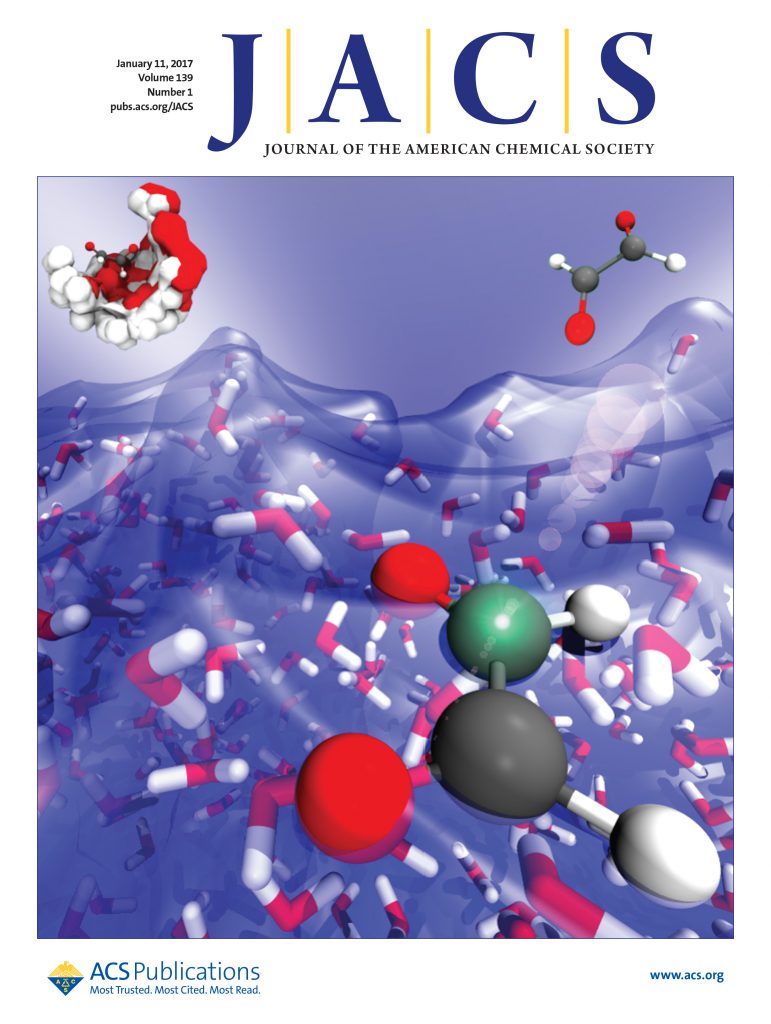Observation of *N2H3 Intermediates by In Situ Electrochemical SERS: New Pathway of Ammonia Oxidation on High-Durability PtIr Catalysts.
IF 14.4
1区 化学
Q1 CHEMISTRY, MULTIDISCIPLINARY
引用次数: 0
Abstract
The electrochemical ammonia oxidation reaction (AOR) is a cornerstone technology for sustainable on-site hydrogen production and clean energy conversion. While Pt-based alloys such as PtIr have emerged as promising AOR electrocatalysts to address the rapid deactivation of pure Pt systems, the atomic-level mechanisms governing their superior stability remain unresolved. Here, we employ in situ electrochemical surface-enhanced Raman spectroscopy to directly track the evolution of intermediates on Pt and PtIr catalysts during the AOR. On pure Pt electrodes, increasing potential drives sequential oxidation of *NH2 to *N3-, ultimately forming surface-bound *NOx species that poison active sites and degrade performance. In stark contrast, PtIr alloys bypass this detrimental pathway by enabling an unconventional *N2H3-centered mechanism. Through N-N coupling of *NH and *NH2 intermediates at Pt-Ir integrative catalytic sites, *N2H3 is generated and dehydrogenated to N2 without the formation of toxic byproducts. Therefore, PtIr alloy catalysts exhibit significantly enhanced durability compared to monometallic Pt catalysts. This work highlights the paramount importance of directly observing key reaction intermediates via in situ spectroscopy for elucidating catalytic mechanisms.用原位电化学SERS观察*N2H3中间体:高耐久性PtIr催化剂上氨氧化的新途径
电化学氨氧化反应(AOR)是可持续现场制氢和清洁能源转化的基础技术。虽然PtIr等Pt基合金已成为解决纯Pt体系快速失活问题的有前途的AOR电催化剂,但控制其优越稳定性的原子水平机制仍未得到解决。在这里,我们采用原位电化学表面增强拉曼光谱来直接跟踪在AOR过程中Pt和PtIr催化剂上中间体的演变。在纯铂电极上,电位的增加会导致*NH2连续氧化为*N3-,最终形成表面结合的*NOx,从而毒害活性位点并降低性能。与之形成鲜明对比的是,PtIr合金通过非常规的以* n2h3为中心的机制绕过了这一有害途径。通过Pt-Ir一体化催化位点上* nhh和*NH2中间体的N-N偶联,生成*N2H3并脱氢成N2,不产生有毒副产物。因此,与单金属Pt催化剂相比,PtIr合金催化剂表现出显著增强的耐久性。这项工作强调了通过原位光谱直接观察关键反应中间体对阐明催化机制的重要性。
本文章由计算机程序翻译,如有差异,请以英文原文为准。
求助全文
约1分钟内获得全文
求助全文
来源期刊
CiteScore
24.40
自引率
6.00%
发文量
2398
审稿时长
1.6 months
期刊介绍:
The flagship journal of the American Chemical Society, known as the Journal of the American Chemical Society (JACS), has been a prestigious publication since its establishment in 1879. It holds a preeminent position in the field of chemistry and related interdisciplinary sciences. JACS is committed to disseminating cutting-edge research papers, covering a wide range of topics, and encompasses approximately 19,000 pages of Articles, Communications, and Perspectives annually. With a weekly publication frequency, JACS plays a vital role in advancing the field of chemistry by providing essential research.

 求助内容:
求助内容: 应助结果提醒方式:
应助结果提醒方式:


